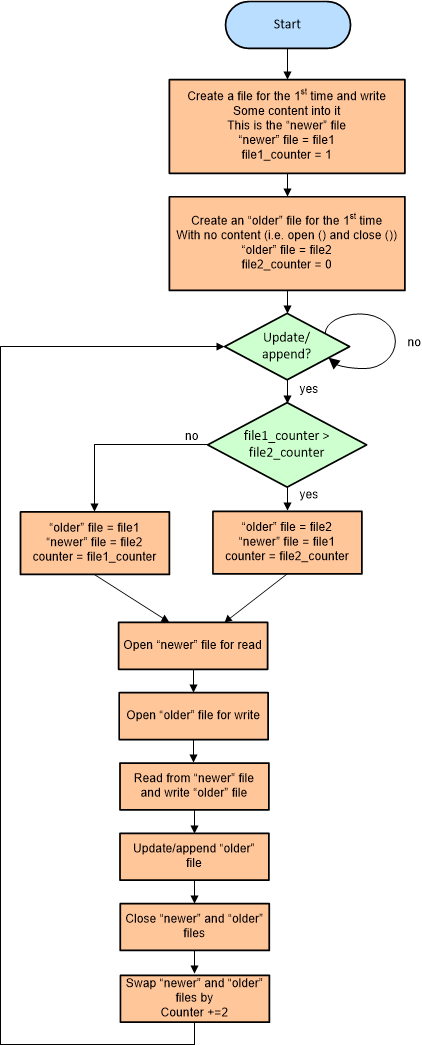SWRA657 June 2020 CC3100 , CC3200
-
SimpleLink Wi-Fi CC3100, CC3200 Serial Flash
- Trademarks
- 1 Introduction
- 2 How File System Content Gets to the Serial Flash
- 3 File System Guidelines
- 4 User File Mathematics
- 5 System and Configuration Files
- 6 Implementing File System Features From Host Processor
- 7 Factors to Consider in Designing With Serial Flash
- 8 Design Recommendations for Ensuring the Integrity of the Power Supply to the Serial Flash
- 9 Recommended Best Practices
- 10 Implications of Data Integrity Compromise to CC3100/CC3200
- 11 References
6.4.2 Procedure
There are several options to implement file appending from the host application. All options are based on read → modify → write.
The assumption is that the host processor does not have enough resources to read the entire file to its space so the serial flash needs to be used as a mediator. The proposed approach is to keep two files that hold the same copy but in different time instances. The update/append is applied to the “older” instance (based on the “newer” instance) and upon successful update/append, it becomes the “newer” instance. So practically this approach implements rollback option in host level and does not make use of the file system fail-safe option.
The procedure for file appending is as follows:
- Create a file and write some content into it. The file would be denoted as file1.
- Initialize a counter to file1 denoted as file1_counter and initialize it to 1.
- The other instance is denoted as file2 and its counter file2_counter is initialized to 0. The “newer” file at this point is file1 and its counter indicates it (file1_counter> file2_counter).
- 4. Now, if an update/append is required:
- Look for the “older” instance. If (file1_counter<file2_counter) file1 is the “older” instance, otherwise it is file2.
- Open the “newer” file for read.
- Open the “older” file for write.
- Read from the “newer” and write to the “older”. At this point, any power fail would not corrupt the file as the “newer” instance is opened for read.
- When reading from “newer” and writing to “older” is done, apply the followings:
- Update/append to “older” instance.
- Close the “newer” instance.
- Close the “older” instance.
- Increase the counter of the “older” instance by 2 so it becomes the “newer” instance.
- Go to step 4 for further operations.
Note that this approach does not use more space than a regular fail-safe file. The main difference is that this method implements fail-safe functionality in the host application. Additionally, write operations and flash erases are kept to a minimum.
Figure 4 illustrates the procedure:
 Figure 4. File Appending Flow
Figure 4. File Appending Flow